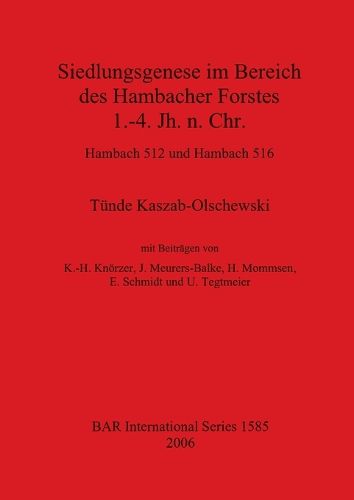Readings Newsletter
Become a Readings Member to make your shopping experience even easier.
Sign in or sign up for free!
You’re not far away from qualifying for FREE standard shipping within Australia
You’ve qualified for FREE standard shipping within Australia
The cart is loading…






This title is printed to order. This book may have been self-published. If so, we cannot guarantee the quality of the content. In the main most books will have gone through the editing process however some may not. We therefore suggest that you be aware of this before ordering this book. If in doubt check either the author or publisher’s details as we are unable to accept any returns unless they are faulty. Please contact us if you have any questions.
This work investigates two civil rural settlements in the hinterland of the CCAA (Cologne) in the province of Germania inferior. Both places functioned as a roman villa rustica and they were excavated in the early 1980s before the surface mining operations began here. During the excavation thousands of finds (ceramic, glass, metal, stone and organic materials) and a number of features were discovered. The settlements were of different size, but their historical development and economical situations are comparable. The villas were founded in the middle of the first century AD. In the initial phase the inhabitants had both Romanised and native roots. They used only timber to build their houses and, later, occasionally stone foundations, framework and bricks. The villas reached their main period of influence from the 2nd to the early 3rd centuries AD. In the second half of the 3rd century the settlement was interrupted and the end of the villae rusticae can be dated to the 4th century AD.During this phase - when significant agricultural production stopped - both places were used for metal (probably iron) production. At this time the people lived once more in timber houses, which were located among the ruins of the Roman buildings. After the end of the 4th century the sites were abandoned. The archaeological evidence presented in this study, combined with the scientific analyses, affords a general reconstruction of a Roman cultural landscape in the first four centuries after Christ.
$9.00 standard shipping within Australia
FREE standard shipping within Australia for orders over $100.00
Express & International shipping calculated at checkout
This title is printed to order. This book may have been self-published. If so, we cannot guarantee the quality of the content. In the main most books will have gone through the editing process however some may not. We therefore suggest that you be aware of this before ordering this book. If in doubt check either the author or publisher’s details as we are unable to accept any returns unless they are faulty. Please contact us if you have any questions.
This work investigates two civil rural settlements in the hinterland of the CCAA (Cologne) in the province of Germania inferior. Both places functioned as a roman villa rustica and they were excavated in the early 1980s before the surface mining operations began here. During the excavation thousands of finds (ceramic, glass, metal, stone and organic materials) and a number of features were discovered. The settlements were of different size, but their historical development and economical situations are comparable. The villas were founded in the middle of the first century AD. In the initial phase the inhabitants had both Romanised and native roots. They used only timber to build their houses and, later, occasionally stone foundations, framework and bricks. The villas reached their main period of influence from the 2nd to the early 3rd centuries AD. In the second half of the 3rd century the settlement was interrupted and the end of the villae rusticae can be dated to the 4th century AD.During this phase - when significant agricultural production stopped - both places were used for metal (probably iron) production. At this time the people lived once more in timber houses, which were located among the ruins of the Roman buildings. After the end of the 4th century the sites were abandoned. The archaeological evidence presented in this study, combined with the scientific analyses, affords a general reconstruction of a Roman cultural landscape in the first four centuries after Christ.